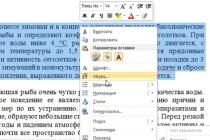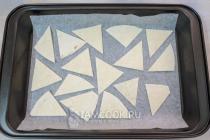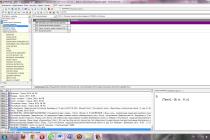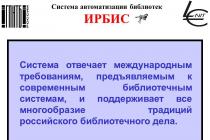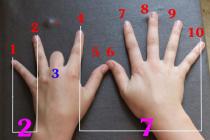A plastic tube from a telephone with a mechanical dialer was kept in the trash for a long time. The plans were to build into it a wired headset with a microphone for connecting to a computer. Not experiencing any special needs for such a thing, no alteration work was carried out. But it can be seen that the storage time of the pipe was already coming to an end, when they turned to me to help make a good person with a sense of humor a gift - a joke. The gift was supposed to be a wireless retro Bluetooth handset that would communicate with the iPhone. They contacted me for a simple reason, such things are on sale on Ebay, but in terms of delivery time, the gift to Russia was late for the donation day. Remembering the handset, I proposed to build a bluetooth headset into it and repeat the design on the "knee". Thanks to the Bluetooth communication channel, the wireless retro handset will easily communicate with any Apple phones iPhone and smartphones.
How to make a retro bluetooth headset with your own hands
1. We open the donor bluetooth headset and check its performance after opening.
2. From the headset, gently solder the conductors to the telephone capsule with our own hands. The ohmic resistance of the headset phone was 32 Ohms. A speaker with the same impedance was removed from the old headphones for insertion into the tube.
3. The headset is very neatly We solder (we are trying very hard) to extend the conductors to the external control button and to the speaker.
Headset - donor
4. It turned out to be difficult to solder the conductors to the search button, but it can be pressed without lengthening only inside the tube, which is permissible due to its rare use.
5. The tube is disassembled, a hole is drilled in the side wall to install the headset control button.
6. Pieces of plastic are used to make pads for fixing the speaker and the board with the headset battery. The board fixing area is fixed in the tube with hot melt glue.
7. Extension leads are inserted into the tube and soldered to the speaker and button.
8. Make a hole under USB port I didn't need a headset - a regular hole for the phone cord was used.
9. The speaker is hot-melted to the plastic backing and the board and the headset battery are point-attached to the plastic guide. The space between the tube and the USB connector is also filled with hot melt glue. Special attention:
- the headset microphone must remain in free space;
- the LED light for indication of operation must be visible from the outside through the openings of the tube.
This article is aimed at those who, like me, have a bunch of half-working stuff lying around, but it's a pity to throw it away. Immediately I say all the trash that you see, I got it for free. So I didn’t lose anything from assembling these ears, but only won.
So in stock I had ExplayL10 headphones and a ProlifeBT55 stereo Bluetooth headset. The headphones, as you can see in the photo, did not have a wire with a plug, and the headset wheezed the speakers and the foam rubber on the ear cushions fell apart, and I did not like the form factor itself. As a result, today I decided to make one working thing out of two semi-working things.
We disassemble headphones and a headset. Fortunately, even a screwdriver was not needed, the Chinese did everything on the latches. We remove the remnants of the wires from the headphones, and from the headset we solder the speakers and temporarily the battery to pull the wiring out of the case.

As a result, the field of parsing and sawing off unnecessary parts of the case, we still have a block of buttons and filling from the headset. The bow and the other ear went into the trash.

Now we need to fit the block of buttons to the body of the exploded headphones. It turned out to be very easy to do. Having removed the decorative strip with the name, I found that the space under it almost coincides in diameter with the block of buttons. You just need to remove the partition. And that was done.

Having unscrewed the filling from the block, I processed the body to the size of the lining.

And I tried it on the headphone case.

In order not to drill extra holes in the case and not to suffer from soldering the mini-usb charging socket, I decided to make a small adapter from mini-usb to the Nokia socket. The socket fits very well in the former wire hole.

I also drilled a small hole for the microphone.
After installing the board in place and fixing it and its parts on hot melt glue, what you see turned out.

And here is the front view. Then I made a small joint. When drilling the hole for the microphone, the headphone body slightly touched the dremel cartridge, but this is not at all noticeable.

As the glue cooled down, I soldered the speaker itself and closed the case.
It's time to solder the battery and the second speaker, which will be in the other ear like the headset.

How everyone soldered, snapped the case, put the foam pads on, put them on the charge to check and see that everything is working (the indicator is red)

And since everything works, we connect it to a phone or computer and enjoy life.
Since the headphones are folded and adjusted with a wire, I decided not to bother and leave it as it is, just throwing it over my head with the headphones on. On my own behalf, I will add that the sound has become many times better (as far as this can be achieved from Chinese ears) and 1.5 times louder than the headset had. All buttons and a microphone are fully functional, which is very pleasing.


How sad it is to look at normal headphones, which, due to frayed wires, lie at rest already enough long time... Yes, it would be possible to solder and repair them, but not when this happens repeatedly. Also, the very fact of the presence of a wire is also not very happy. In this case, digging into my details, I decided to do demon wired headphones working via bluetooth.
What does it take to make headphones wireless? Headphones themselves, straight arms and a board from an audio device working via Bluetooth (supporting audio transmission using A2DP technology). For many, it will be difficult to find the right board, since not everyone has abandoned Bluetooth speakers, headsets and other wireless conveniences that have become unusable for one reason or another (meaning that they are broken or abandoned, but have not lost their functions).
This article is not an instruction on how to make wireless headphones! I don't know much about electrical physics and therefore explain everything in my own words. If this did not scare you off, then continue reading the article about how I turned ordinary headphones into wireless ones.
It was evening, in the afternoon I learned that tomorrow I urgently need to go to another city on business, and these are trains and a long road. On the road, if possible, I do some things or watch anime, and accordingly I resort to using headphones. My headphones are wired and some have a wire not 1.5 meters, but all three, but I don't want to sit with vacuum plugs, since I have problems with my ears. Even though I'm not studying at the highest level and I'm not an engineer with my mother, I decided to recall the headphones that survived after reading the technological mess. The last time I used the headphones was about 5 years ago, when I was at the gymnasium. Sometimes there were attempts to resurrect them, but not for long. These were SVEN AP-540 headphones. Their sound quality is acceptable, although after the Sennheiser HD180 this is already a bit different, although there was bass in contrast to the synheiser.
Disassembling the headphones required a bit of deduction from me, as the bolts ended up under a red plug that had to be gently snapped off. There I was greeted by three bolts that allowed me to reach the wired web of entrails.
V Bluetooth quality the board, a certain ilink headset was carefully opened, which was bought a long time ago in a store and was abandoned a year later because of the headphone device. The headset has a microUSB connector for charging, as well as a two-color diode and a battery (capacity remains a mystery). The main thing is that the headset supports technology A2DP otherwise the whole invention doesn't make sense. This technology transmits sound in excellent quality over the air and supports stereo signal. The standard protocol is designed for calls and without dancing with a tambourine, you will not play music on an ordinary headset for calls, and if it does, then the quality is terrible.
The headset has already participated in some of my experiments, so there is not a native microphone and sloppy soldering on the wires.
First of all, instead of the speaker, I soldered two short wires for convenience. To begin with, I decided to make myself a mono sound, since the second earphone, for a stereo effect, is connected via the charging connector and you need to watch the wiring of the board to organize stereo.
I unsoldered the headphone wire, or rather tore it off, and immediately felt the lightness of the whole structure. After that I was faced with the fact that there was a volume control in my headphones. I didn't want to leave it alone and, after a short manipulation of finding the right connectors, I soldered two of my wires to the volume control.
The microphone fell off by itself in the process and did not burden me with working with it. Now for me it was a question of completing all my creativity in the headphone case, and the case is small enough.

 The time was already late, but it was necessary to go early, so I decided to accelerate and not solder the microphone from the headphones, and the board was taken out, since the button and the charging connector demanded special attention, which had to be taken out to the case and the board fit inside.
The time was already late, but it was necessary to go early, so I decided to accelerate and not solder the microphone from the headphones, and the board was taken out, since the button and the charging connector demanded special attention, which had to be taken out to the case and the board fit inside.
This article is written for those who have accumulated a lot of electronic and broken junk at home, but it's a pity to throw it away. I got everything for nothing and I only won from this homemade product.
And so I had Explay headphones and a Prolife BT55 stereo Bluetooth headset. The headphones, as you can see in the photo, did not have a wire, and the headset's speakers were wheezing. As a result, I decided to make one fully functional one out of partly working things, and even the right one.

We disassemble everything. No screwdriver needed - on the snaps. We remove the remnants of the wires from the headphones, and from the headset we solder the speakers and temporarily the battery in order to pull the wiring out of the case.

As a result, the field of parsing and sawing off unnecessary parts of the case, we still have a block of buttons and filling from the headset.

Now we need to fit the button block to the headphone case. It turned out to be very simple to do this. Having removed the cover with the name, I found that the space under it almost coincides in diameter with the block of buttons, you just need to remove the partition.

Having unscrewed the filling, I processed the body to the size of the lining.

And I tried it on the headphone case.

So that with the soldering of the mini - usb charging socket, I decided to make a small adapter from the mini - usb to the socket from the nokia mobile phone. The socket fits very well in the former wire hole.

I also drilled a small hole for the microphone.
After installing the board in place and fixing it and the parts with hot glue, what you see is what you see.

Front view. Then I made a small joint. When drilling the hole for the microphone, the cartridge touched the headphone case a little, but this is not at all noticeable.

As the glue cooled down, I soldered the speaker itself and closed the case.
I soldered the battery and the second speaker.

How everyone soldered, snapped the case, put the foam pads on, put them on the charge to check and see that everything is working (the indicator is red)

Since the headphones are folded and adjusted with a wire, I decided to leave it as it is, just throwing it over my head with the headphones on. I will also add that the sound has become several times better and more than one and a half times louder than that of the headset. All buttons and a microphone are fully functional, which is very pleasing.




Rubbish, which is a pity to throw out, then this article is just for you. All the accessories were given to the author of the homemade product completely free of charge, and for this reason, you will only win.
Once the author had Explay headphones and stereo headset Bluetooth Prolife BT55. In the photo, you can see that the headphones are missing some of the wires, and the headset made wheezing sounds, that is, the speakers were completely defective.
First of all, we will analyze everything. We didn't even need a screwdriver for this operation, because all fasteners are ordinary latches.

You need to remove the rest of the wires from the headphones, and unsolder the speakers from the headset and remove the battery for a while. We do this in order to be able to get the wiring, it is located in the headphone case.
As a result of the manipulations done from the headset, there is only a block with buttons and internal content.

Next, we need to attach the block with buttons to the headphone case we have. This is very easy to do.
After the cover has been removed, you can see that the space under it is identical in diameter to the existing button block.
The last task at this stage is just to remove the wiring.


After the internal contents have been separated, we process the entire body so that it matches the size of the overlay.



Let's try this case on the case of the existing headphones.
Next, you need to unsolder the mini-usb socket intended for charger and the author figured out how to make a small adapter from this socket to the socket that previously belonged to the mobile nokia phone.
It turned out that the socket fits perfectly into the small hole that was previously intended for the wire.


Next, you need to make a small hole for the microphone using a drill.
After installing the board in its place and fixing it and related parts in place with hot glue, what you can see in the photo came out.

This photo is a front view. Here the author made a slight mistake. It's just that when he drilled holes for the microphone, it turned out that he slightly touched the body with the cartridge.
As soon as the glue has frozen, we immediately attach the speaker itself with a soldering iron, and then close the case.
Well, finally everything is soldered and you can snap the case. Now we will install the foam rubber pads in place and set the charge in order to conduct a check.
Checking it shows us that the indicator lights up red, which means everything is working.

For the reason that these headphones are regulated with a wire, the author decided to leave everything as it is. The only thing that will be needed is to throw the wire behind your head while the headphones are on. The sound in the headphones has become much better and even much stronger than it was before with the headset. The buttons, as well as the microphone, perform their functions remarkably well, which is good news.

